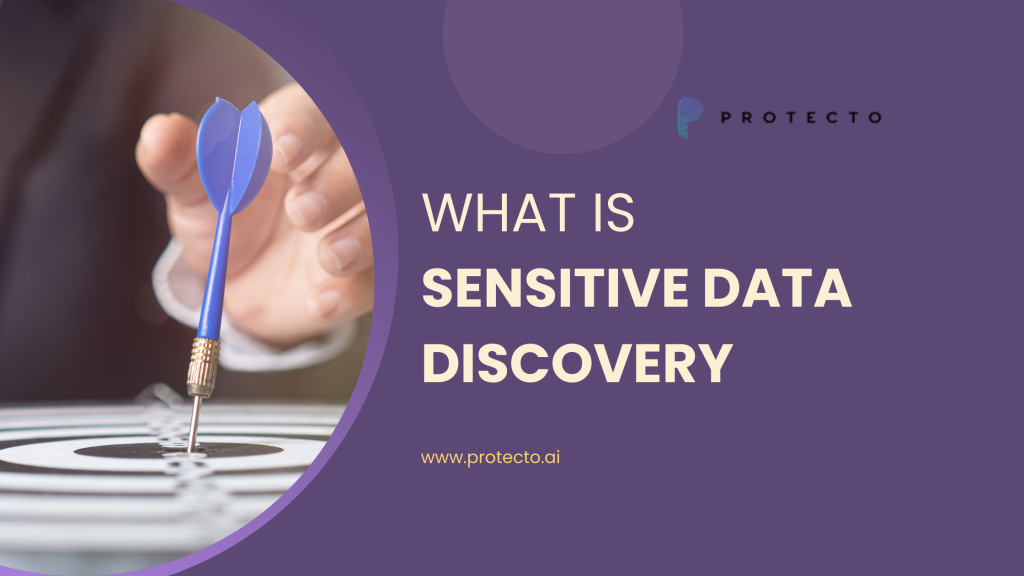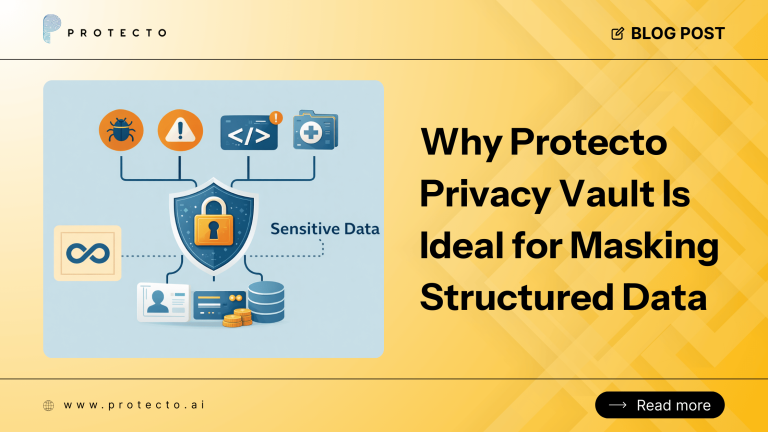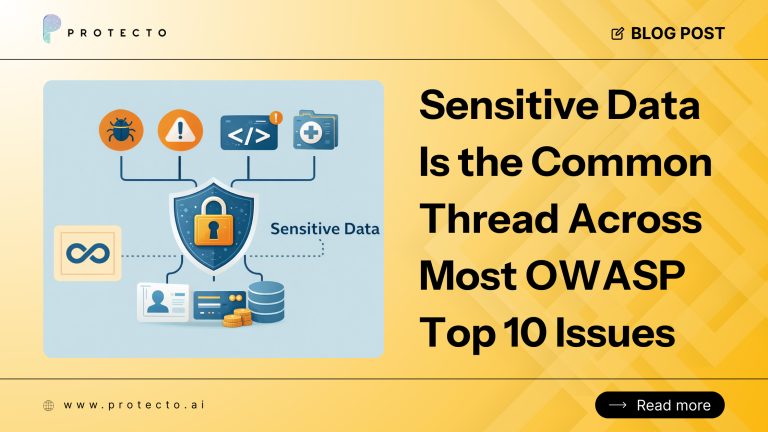For most companies today, the question isn’t whether a data breach will occur, but rather when it will occur. This predicament is primarily due to the sheer volume of data, the challenges associated with monitoring sensitive data, and the transition to remote work. Consequently, IT security teams are constantly navigating a dynamic and enduring risk landscape, making it exceptionally challenging to maintain data security and implement effective sensitive data protection strategies.
The foundation of safeguarding sensitive data commences with the process of sensitive data discovery. Sensitive data discovery empowers IT teams with a deeper understanding of what requires protection, the precise locations where valuable information resides, and the optimal strategies to counter ongoing insider and external threats. Implementing robust sensitive data management practices is crucial for organizations to maintain the confidentiality and integrity of their data assets.
Sensitive data discovery tools meanwhile help in scanning and locating sensitive data across an organization. These tools, which include PII data discovery tools and PCI data discovery tools, are essential for comprehensive data discovery and classification. Continue reading to learn more about sensitive data, sensitive data discovery, and how to pick the right sensitive data discovery tool for your organization.
What Is Sensitive Data?
Sensitive data, also known as confidential or private data, refers to any type of information that, if disclosed or accessed by unauthorized individuals or entities, could result in harm, privacy breaches, financial losses, or other adverse consequences. Sensitive data is typically characterized by its need for heightened security measures to protect its confidentiality, integrity, and availability. Understanding what is sensitive data is crucial for effective sensitive data management.
Examples of sensitive data include:
- Personal Identifiable Information (PII): This includes data such as names, Social Security numbers, driver’s license numbers, passport numbers, and other personally identifiable information that can be used to identify or impersonate individuals. Personal data discovery is a critical aspect of sensitive data discovery.
Interested read: What is Personally Identifiable Information (PII)? Types & Examples
- Financial Information: Credit card numbers, bank account details, and financial transaction records fall into this category. Unauthorized access to this data can lead to financial fraud or theft.
- Healthcare Information (PHI): Protected Health Information includes medical records, insurance information, and any health-related data. The Health Insurance Portability and Accountability Act (HIPAA) in the United States sets strict guidelines for the protection of PHI.
- Corporate Data: This comprises intellectual property, trade secrets, business plans, and proprietary information. Unauthorized access to this data can harm a company’s competitiveness.
- Government and Military Data: Sensitive government and military data includes classified information, national security data, and intelligence information. Unauthorized access to this data can have severe national security implications.
- Legal Documents: Legal documents such as attorney-client privileged communications or court records may contain sensitive information that should be protected.
- Educational Records: Student transcripts, grades, and other educational records contain personal information that needs protection.
- Customer Data: Customer databases, including contact information and purchase history, are sensitive as they can be used for marketing purposes but must be protected from data breaches.
- User Credentials: Usernames, passwords, and other login credentials are sensitive and need strong protection to prevent unauthorized access.
- Biometric Data: Biometric information like fingerprints, retinal scans, and facial recognition data are highly sensitive because they are unique to individuals and difficult to change if compromised.
Organizations and individuals have a responsibility to safeguard sensitive data, to prevent data breaches and protect privacy. Violations of data protection laws can result in legal and financial consequences. Implementing sensitive data security measures is essential for compliance and risk mitigation.
Interesting read: Understanding the significance of Enterprise Data Protection
What Is Meant by Sensitive Data Discovery?
Sensitive data discovery is a process or set of techniques and tools used to identify, locate, and classify sensitive or confidential information within an organization’s data environment. The primary goal of sensitive data discovery is to gain a clear understanding of where sensitive data resides, how it is structured, and how it is accessed. This knowledge is crucial for ensuring data security, compliance with data protection regulations, and effective risk management. Sensitive data discovery tools play a vital role in this process, providing organizations with the means to conduct thorough data discovery for GDPR and other regulatory requirements.
Here are key aspects of sensitive data discovery:
- Identification and Classification: Sensitive data discovery involves the identification and classification of data that falls under the category of sensitive or confidential. This includes data types like personally identifiable information (PII), financial records, healthcare data, intellectual property, and more.
- Data Scanning: Organizations use automated scanning tools and software to search through their data repositories, databases, file systems, cloud storage, and other data sources. These sensitive data scanning tools are configured to recognize patterns and formats associated with sensitive data, such as credit card numbers, social security numbers, or specific keywords.
- Contextual Analysis: Sensitive data discovery goes beyond simple pattern recognition. It takes into account the context in which data is used and stored. For example, it considers whether data is encrypted, who has access to it, and whether it is being shared internally or externally.
- Data Mapping: Once sensitive data is identified, the process involves creating a data map or inventory that documents where this data is located, who has access to it, and how it flows within the organization. This map is a valuable resource for data governance and risk management.
- Risk Assessment: Sensitive data discovery also includes evaluating the risk associated with the identified data. This assessment helps organizations prioritize their security efforts. For example, they can focus on protecting the most critical and high-risk data assets.
- Compliance with Regulations: Many data protection regulations, such as the General Data Protection Regulation (GDPR) and the Health Insurance Portability and Accountability Act (HIPAA), require organizations to identify and protect sensitive data. Sensitive data discovery helps organizations demonstrate compliance with these regulations. GDPR data discovery software is particularly important for organizations subject to European data protection laws.
- Security and Access Control: Armed with the knowledge of where sensitive data resides, organizations can implement stronger security measures and access controls. This can involve encryption, access restrictions, and monitoring of data access and usage.
- Data Retention and Deletion: Knowing the location of sensitive data allows organizations to establish data retention policies and procedures. They can also confidently delete data that is no longer needed, reducing the risk of data breaches.
Sensitive data discovery is an ongoing process, as data environments evolve, and new data sources are added. It plays a crucial role in data governance, cybersecurity, and compliance efforts, helping organizations maintain the confidentiality and integrity of their most valuable information assets. Sensitive data intelligence derived from this process informs decision-making and risk management strategies.
What Are Sensitive Data Discovery Tools?
Sensitive data discovery tools are software solutions designed to help organizations identify, locate, and classify sensitive or confidential information within their data repositories, databases, file systems, cloud storage, and other data sources. These tools are essential for data security, compliance, and risk management. They use various techniques, algorithms, and patterns to scan and analyze data, looking for information that may need special protection due to its sensitivity.
Sensitive data discovery tools help businesses and organizations effectively identify or locate sensitive data across known sources of data. Importantly, a good data discovery tool can identify sensitive data in previously unknown sources. In addition, an effective sensitive data discovery process helps the organization optimize its data storage and security around it.
Sensitive data discovery tools allow these organizations to classify their sensitive data and improve their understanding of the associated risks and how best to mitigate those risks. An excellent sensitive data discovery tool can make a big difference – it enables organizations to simplify their data protection risks by many folds. These tools are often part of a broader suite of sensitive data management tools or sensitive data management software.
Also read: 8 Data Mapping Best Practices
How to Pick the Right Sensitive Data Discovery Tool for Your Organization
Selecting the right sensitive data discovery tool for your organization is a crucial decision to ensure data security, compliance, and effective risk management. To make an informed choice, several key considerations should be taken into account, including the tool’s capabilities for sensitive data detection and its ability to support data discovery and classification.
First and foremost, you must assess your organization’s unique needs and objectives. Start by defining what sensitive data means within your context. Determine the specific types of sensitive information you need to identify and protect, such as personally identifiable information (PII), financial data, or intellectual property. Understanding your data landscape is essential because some tools specialize in certain data types or industry-specific compliance requirements.
Consider the scale and complexity of your data environment. Large enterprises with extensive data repositories may require a robust and scalable solution, while smaller organizations may find simpler tools more suitable. The tool’s scalability should align with your growth plans and evolving data infrastructure.
Evaluate the regulatory landscape that applies to your organization. Different industries and regions have varying data protection regulations, such as GDPR, HIPAA, or PCI DSS. Ensure the sensitive data discovery tool you choose supports the relevant compliance requirements for your industry. Look for features that facilitate compliance reporting and audit trials to simplify regulatory obligations. For organizations subject to European data protection laws, GDPR data discovery capabilities are particularly important.
Compatibility with your existing IT infrastructure is crucial. Assess whether the tool can seamlessly integrate with your current security systems, data loss prevention (DLP) solutions, encryption mechanisms, and incident response workflows. Compatibility ensures a smooth implementation process and reduces potential disruptions to your operations.
Usability and ease of deployment are vital considerations. The tool should have a user-friendly interface that your security and compliance teams can navigate efficiently. Ensure that your team can easily configure, run scans, interpret results, and customize settings as needed. Quick and hassle-free deployment is also important, as lengthy implementation processes can delay security enhancements.
Scalable and real-time monitoring capabilities should not be overlooked. The tool should adapt as your data environment changes, and it should provide real-time alerts and notifications for potential security incidents. This proactive monitoring allows for timely response to emerging threats, minimizing their impact.
When evaluating sensitive data discovery tools, it can be helpful to consult industry reports and rankings. For example, sensitive data discovery tools Gartner reviews can provide valuable insights into the strengths and weaknesses of different solutions.
In conclusion, selecting the right sensitive data discovery tool for your organization involves a thorough assessment of your unique requirements, regulatory obligations, compatibility with existing systems, usability, scalability, budget constraints, and vendor reputation. By carefully considering these factors, you can make an informed decision that aligns with your organization’s data protection and compliance objectives.
Discover and Secure Your Sensitive Data with Protecto
With Protecto, discover and eliminate data privacy risks without compromising data utility. Easily access and utilize your data for AI and data analytics, all the while ensuring security and following privacy rules.
Insufficient insight into sensitive data can result in vulnerabilities and avoidable expenses associated with incident response. Protecto conducts thorough scans of your data repositories, pinpointing sensitive information within files, aiding your compliance efforts. You have the flexibility to choose the specific types of personally identifiable information (PII) and other sensitive data you wish to track, while Protecto handles the rest. Our intelligent solution helps identify sensitive data that could potentially be compromised during data exfiltration or unauthorized access, and it also compiles a record of the locations of sensitive data, ensuring adherence to regulatory mandates.
Derive value quickly by connecting select data sources. Avail our simplified pricing model as you protect additional data sources. To know more, schedule a demo or sign up for a free trial account, today!
Frequently Asked Questions on Sensitive Data Discovery
Why is sensitive data discovery important?
Sensitive data discovery is crucial for data security, compliance with regulations, risk management, and protecting an organization’s most valuable information assets.
What is the role of sensitive data discovery in compliance?
Sensitive data discovery helps organizations demonstrate compliance with data protection regulations by identifying and protecting sensitive data.
What features do sensitive data discovery tools typically offer?
Sensitive data discovery tools have features like data scanning, classification, contextual analysis, data mapping, real-time monitoring, risk assessment, compliance reporting, and integration capabilities.
Are there regulations that mandate sensitive data discovery?
Yes, regulations like GDPR, HIPAA, and PCI DSS require organizations to discover and protect sensitive data.
Is sensitive data discovery a one-time process?
No, sensitive data discovery is an ongoing process because data environments change, and new data sources are added. Regular scans and updates are hence very necessary.
Can sensitive data discovery help with data cleanup and data minimization efforts?
Yes, sensitive data discovery can help identify unnecessary or outdated sensitive data that can be securely deleted or archived, aiding in data cleanup and minimization efforts.



